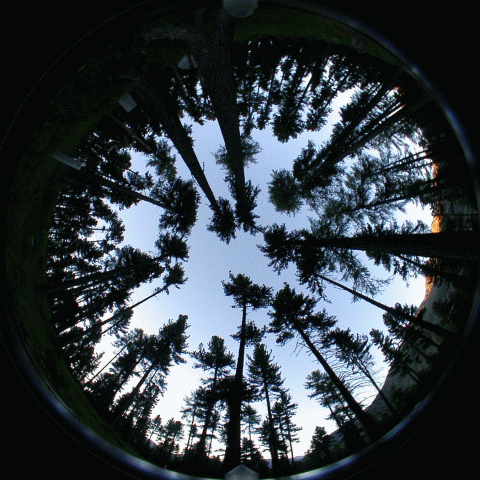Estimating the LAI of a canopy is easier if it can be assumed that the leaves (or needles) are distributed at random within this canopy. In reality, however, this assumption is often not verified. In forests, for example, broadleaved trees are able to somewhat adapt their shape and to fill gaps to make use of the available light. Conifer trees, on the other hand, have a more determined shape and are less able to fill gaps. Conifer canopies are thus more clumped. This is especially the case at higher elevations, because of the snow: trees are better able to withstand snow pressure if they grow in small groups.
In a clumped canopy, leaves are hiding each other and leave larger gaps
in between. There is thus more light reaching the ground as compared to a canopy
with a random leaf distribution. The LAI being calculated
based on light transmission, it becomes underestimated if the canopy is clumped.
The apparent LAI (also called effective LAI, or LAIe) is thus lower than the real
LAI. The ratio LAIe/LAI is called Ω (omega). Ω can be estimated if it
is possible to distinguish which part of the light from the sky is coming through
larger gaps and which part is coming through the canopy itself.
To make things even more complicated: in conifers there is another clumping effect
at a smaller scale, with a corresponding ω (small omega) factor: it is the
ratio between needle area and apparent twig area. Correcting for this ω is
not included in the analysis of hemispherical photographs because it is beyond its
optical resolution. ω should thus be estimated from measurements on single
twigs and their needles.
The canopy on this picture is strongly clumped: the needles are all clumped near the top of the tree stems and leave large gaps in between. LAI estimated with the assumption of a random canopy would be 1.34 (LAIe). Taking the gap structure into account leads to a higher estimate of 1.80 (Ω = 0.75).
